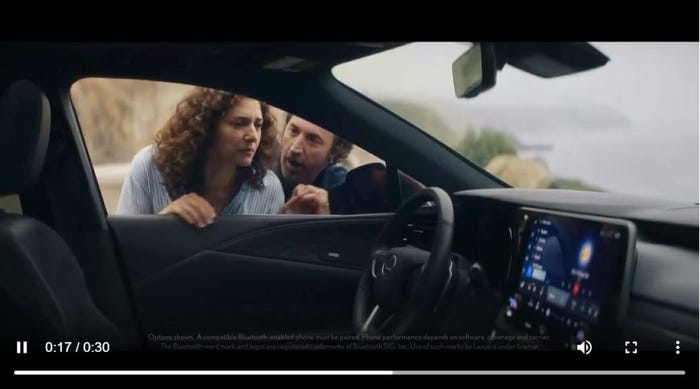Embattled PSA Cuts Costs, Grows Overseas
PSA Peugeot Citroen’s 2012 priorities include E1 billion in cost cuts, successfully launching four cars in Europe and reducing debt. The auto maker also will continue expanding in China, Russia and Latin America.

PARIS – PSA Peugeot Citroen, anxious to remain an independent, family-controlled company, is selling buildings and part of its Gefco logistics company to raise cash and solidify its balance sheet.
Although its subsidiaries earned enough to keep the French auto maker in the black for the year, losses in the automotive business and continued investments in China meant debt ballooned from 9% of equity to 23% at the end of 2011.
Automotive revenues fell sharply in the second half because of price wars, declining volume in Europe, raw-materials costs ballooning and a dramatic increase in car inventories.
On the positive side, PSA is selling more premium cars and is enjoying volume growth in China, Latin America and Russia. “Moving upscale and globalization have never been so indispensable,” CEO Phillip Varin says.
This year’s priorities are cutting costs by E1 billion ($1.3 billion), successfully launching four cars in Europe and reducing company debt. The outlook in the home market won’t help; Varin expects the European market to decline 5% and to drop 10% in France.
Group revenue rose 6.8% in 2011 to E60 billion ($78.6 billion), for operating profits of E1.3 billion ($1.7 billion) and net income of E588 million ($770 million).
However, the auto business lost E439 million ($574.4 million) despite increased revenues on the sale of fewer cars. PSA delivered 3,549,000 units in 2011, down from 3,602,000 year-earlier, but revenues from new-car sales totaled E31.7 ($41.2 billion) billion, up 2.9%.
The damage came in the year’s second half, when sales volumes fell 6%, after increasing 1.2% in the first half.
Varin says price competition in the A and B segments was fierce starting in September. PSA tried to preserve margins, but sales losses were compounded because the high-volume Peugeot 207 was at the end of its product cycle, as were the Citroen C1 and Peugeot 107 small cars built by Toyota.
The best news from the automotive side was movement upmarket.
An improved product mix added 6.5% to revenues. For the year, premium vehicles including the Citroen DS3 and DS4 and Peugeot 508 and 3008 made up 18% of the volume, compared with 14% in 2010 and 9% in 2009.
PSA sold more C- and D-segment cars than A- and B-segment models in 2011, in part because the 207 was ending its career.
Cash flow was negative in 2011, affected in particular by a considerable increase in car inventories that, in turn, was related to two supplier problems.
The Japanese tsunami in March resulted in a lack of parts for some diesel engines and transmissions, and a software problem at French-supplier Agrati disrupted deliveries of fasteners that affected production at some factories.
In both cases, Varin says, PSA kept factories working by building what models it could. But the product offerings did not match customer demand, so inventories climbed. In Europe, PSA had a 65-days’ supply at the end of 2011, up from 56 a year earlier.
“We are going to reverse this in 2012,” promises Jean-Baptiste de Chatillon, named chief financial officer in January.
Positive news included the E150 million ($196 million) PSA earned last year in China on deliveries of 404,400 units from Dongfeng Peugeot Citroen Automobiles. Unit sales rose by 7%, although earnings from PSA’s 50% ownership were down from E159 million ($208 million) a year earlier.
Two new Citroens will be launched this year at DPCA, after the Peugeot 508 and 308 reached showrooms in 2011.
PSA’s second joint venture, with partner Chang’an, goes into production in 2013. Without offering details, Varin says six different models in Citroen’s DS line will be available in China in 2014: three made there and three imported. The DS3 and DS4 currently are on sale in Europe, with the DS5 launching this year.
PSA aims for a 5% market share in China from DPCA and 3% from its JV with Chang’an.
The auto maker also plans to launch six new models in both Latin America and Russia this year and will begin complete-knocked-down production in Russia of the Peugeot 408, a 3-box version of the 308 already made in China.
PSA expects the China market to grow 7% this year, Latin America 6% and Russia 5%.
A key victim of PSA’s cash-conservation efforts is the Peugeot factory in India announced last year. “India remains a strategic market,” Varin says, “but we have delayed the moment of making the first investment.”
The CEO indicates India will return to the agenda when business is better, but offers no timetable. A supplier who attended a PSA meeting on India in January says the auto maker hadn’t yet decided on what product would be made or who target customers would be.
The sale of buildings including PSA’s Paris headquarters would be financial transactions in which the auto maker would rent them back from the buyer. The sale of its participation in Gefco’s trucking unit would leave PSA as a major stockholder.
The auto maker late last year sold a car-rental business for E440 million ($575 million).
The E1 billion ($1.3 billion) PSA expects to save this year includes E400 million ($523 million) from purchasing, of which 80% already has been identified; E600 million ($784.3 million) from fixed costs, half coming from operations; E100 million ($130 million) from research and development; and E200 million ($260 million) from manufacturing.
Varin says PSA’s manufacturing in Europe is profitable only when plants run at capacity, and the auto maker was at 86% capacity on a 2-shift basis in 2011.
About the Author
You May Also Like



